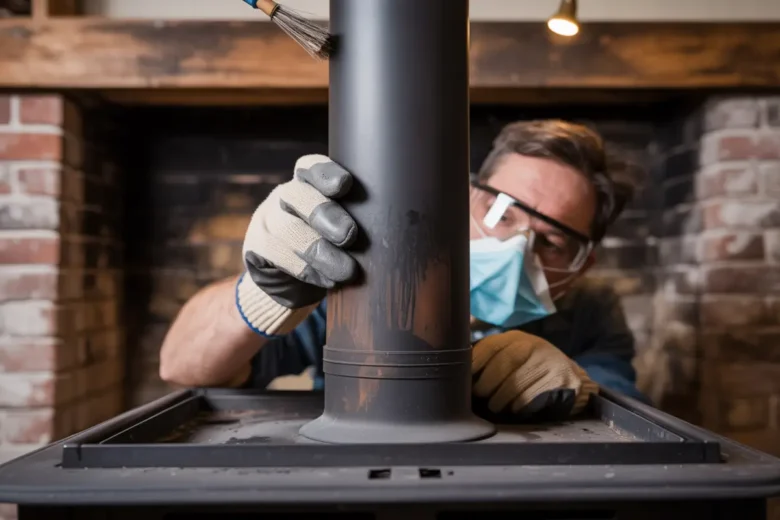Keeping your wood stove pipe clean is essential not only for maintaining the efficiency of your heating system but also for ensuring the safety of your home. Over time, creosote and soot build up inside the pipe, creating a serious fire hazard. This sticky, flammable residue can ignite and cause dangerous chimney fires if left unchecked. Besides safety risks, clogged pipes also reduce airflow, making your stove work harder and less efficiently. In this guide, you’ll learn how to clean your wood stove pipe like a pro, step-by-step, so you can keep your home warm, safe, and smoke-free all year round.
Why Regular Wood Stove Pipe Cleaning Is Crucial
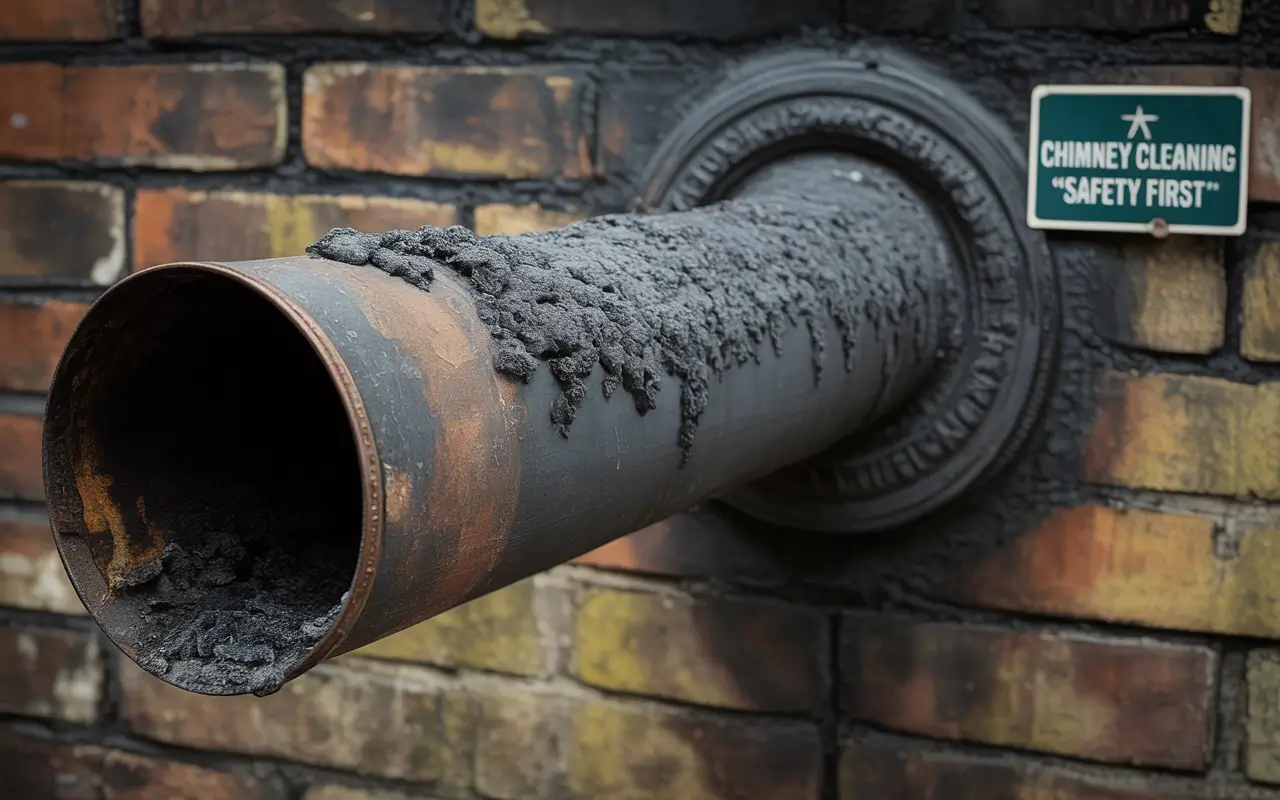
Preventing Creosote Buildup and Chimney Fires
When you burn wood in your stove, smoke contains moisture and volatile gases that cool and condense inside the wood stove pipe, forming creosote—a thick, tar-like substance that sticks to the pipe walls. Over time, this creosote buildup can harden and accumulate, creating a serious fire hazard. Creosote is highly flammable, and if it ignites, it can cause a dangerous chimney fire. Such fires can damage your chimney and potentially spread to your home, causing severe property damage and risking lives. Regular wood stove pipe cleaning removes this buildup before it becomes a hazard.
Enhancing Stove Efficiency and Heat Output
A clogged wood stove pipe filled with soot and creosote restricts airflow, making your stove work harder and less efficiently. When your pipe is clean, smoke and gases exit smoothly, improving combustion and increasing heat output. This means your wood burning stove heats your home more effectively while saving on firewood costs.
Avoiding Smoke Damage and Health Hazards
A dirty stove pipe can cause smoke and harmful gases like carbon monoxide to leak back into your home, leading to respiratory irritation and serious health risks. Proper stove pipe maintenance and cleaning ensure that these dangerous gases are safely vented outside, protecting your family’s health.
Compliance with Fire Safety Standards (NFPA)
The National Fire Protection Association (NFPA) recommends cleaning and inspecting your wood stove pipe and chimney at least once a year. Following these guidelines reduces the risk of fire, ensures your stove operates safely, and can help you comply with home insurance policies. Regular maintenance and chimney sweep tools are key to keeping your wood stove safe and efficient.
Tools and Materials Needed for Cleaning Your Wood Stove Pipe
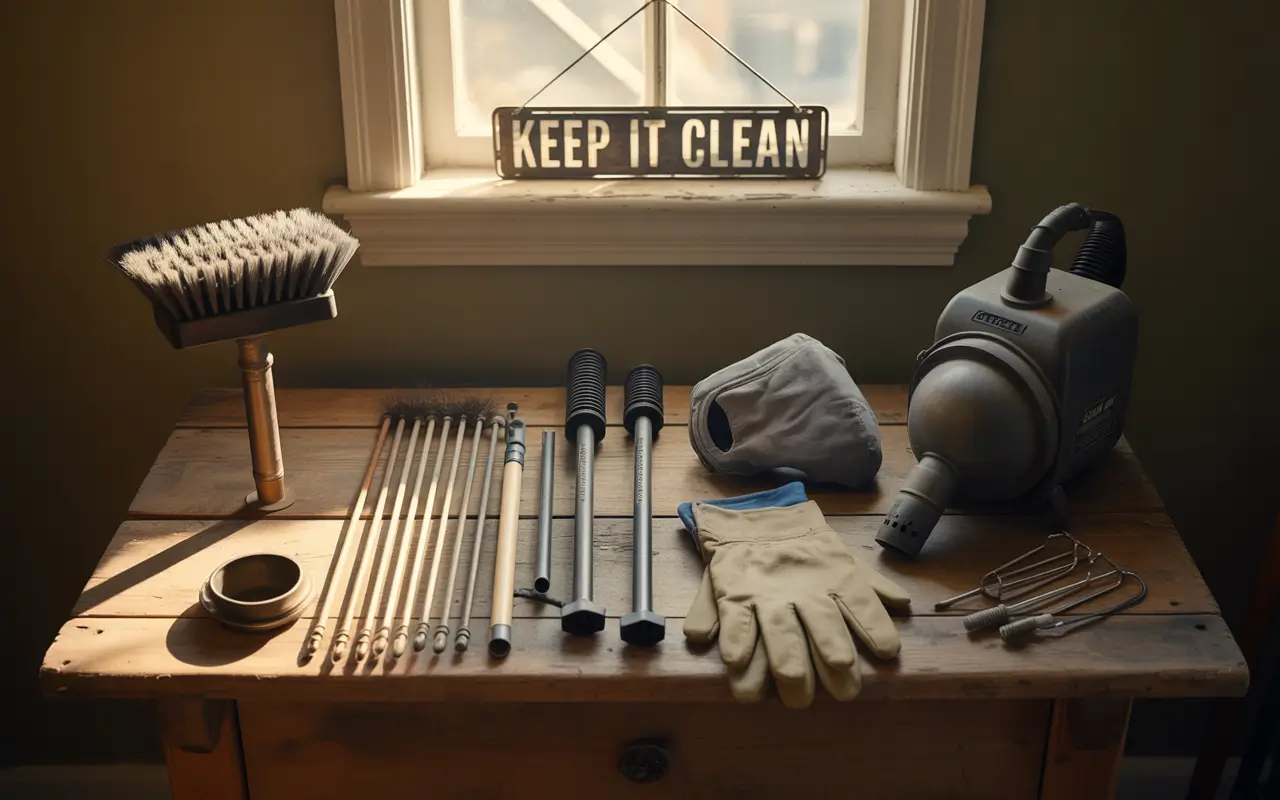
Cleaning your wood stove pipe safely and effectively requires the right tools and materials. Having everything prepared before you begin ensures a smooth process and better results. Below are the essential items you’ll need:
Essential Chimney Sweep Tools (Stove Pipe Brush, Extension Rods)
The core tool for cleaning a wood stove pipe is a chimney brush designed specifically for stove pipes. These brushes come in various sizes to fit different pipe diameters, usually made with stiff bristles or wire to scrape away stubborn creosote and soot. To reach the entire length of the pipe, you’ll also need extension rods that connect to the brush and allow you to clean from top to bottom or vice versa. For more detailed info on choosing the right brush, check out this guide from the Chimney Safety Institute of America (CSIA).
Safety Gear: Gloves, Mask, and Eye Protection
Cleaning a stove pipe kicks up fine soot and dust, some of which can be harmful if inhaled or if it gets into your eyes. Always wear durable work gloves to protect your hands from sharp edges or debris. Use a dust mask or respirator rated for fine particles to avoid breathing in creosote dust and soot, which can irritate your lungs. Safety glasses or goggles will protect your eyes during brushing and scraping.
Ash Vacuum and Cleaning Cloths
After brushing the pipe, you’ll likely have loose ash and creosote flakes in and around your stove. A specialized ash vacuum is highly recommended because regular household vacuums aren’t designed to handle fine ash safely and could be damaged or cause dust clouds. Use cleaning cloths or rags to wipe down the stove pipe exterior and surrounding areas to keep your workspace tidy.
Optional: Creosote Removal Chemicals and Firewood Preparation
In cases where creosote buildup is thick and hardened, mechanical brushing might not be enough. There are chemical creosote removers available that can help soften the residue for easier removal. However, always follow product instructions and safety warnings when using these chemicals. Additionally, using well-seasoned, dry firewood helps reduce creosote formation in the first place. The U.S. Forest Service provides helpful tips on selecting and preparing firewood for cleaner burning.
Step-by-Step Guide to Cleaning Your Wood Stove Pipe
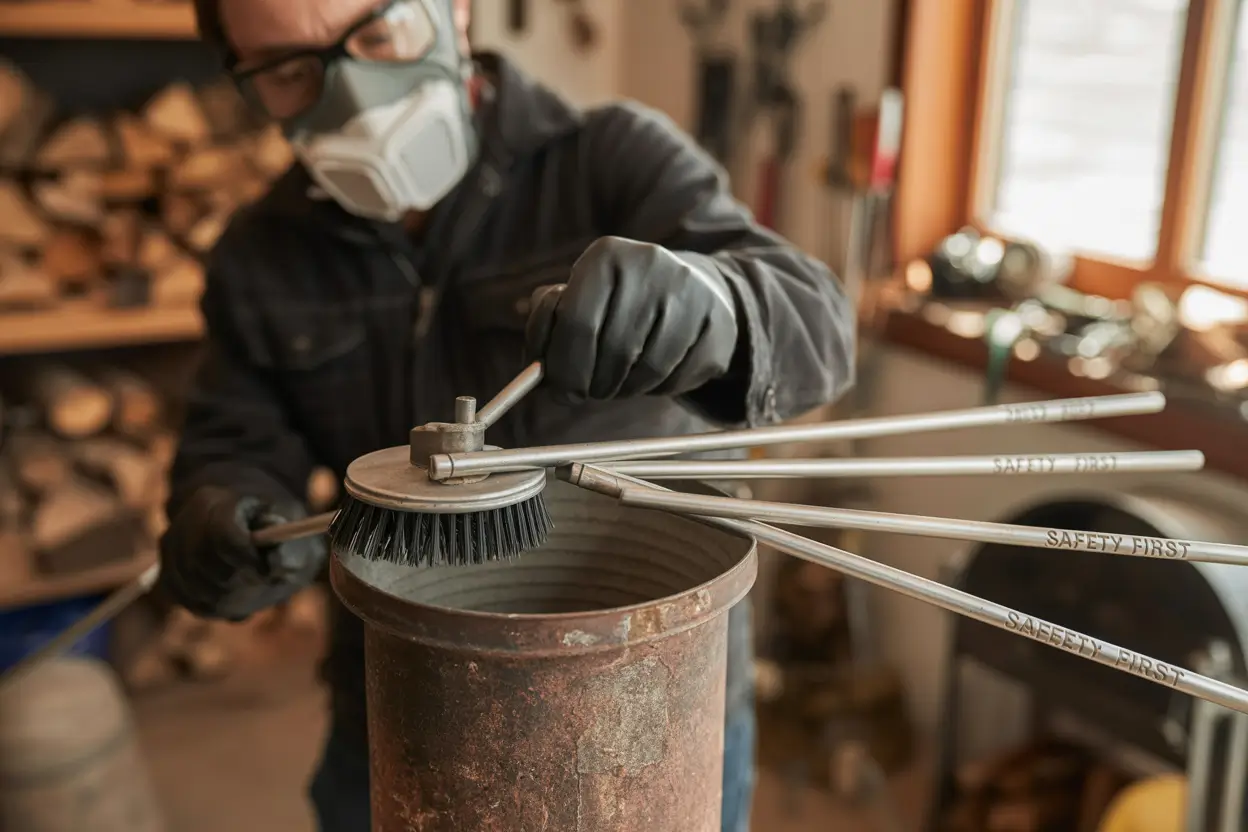
Cleaning your wood stove pipe may seem daunting, but by following these steps carefully, you can do it like a pro. Make sure to take safety precautions and work methodically to ensure the best results.
Preparing Your Stove and Work Area Safely
Before you begin, make sure your wood stove is completely cool to avoid burns. Lay down a drop cloth or old sheets around the stove and pipe to catch falling soot and debris. Open doors or windows for ventilation, and wear your safety gear—gloves, mask, and goggles. It’s also a good idea to have a fire extinguisher nearby just in case. For more safety tips, visit the National Fire Protection Association (NFPA).
Inspecting the Pipe for Soot and Creosote Buildup
Use a flashlight to look inside the stove pipe and chimney for signs of thick creosote deposits or soot buildup. If you notice black, shiny, or flaky layers, that indicates creosote. It’s best to clean as soon as possible to prevent fire risks. If you’re unsure, professional chimney inspections are recommended at least once a year.
Using a Chimney Brush to Clean the Pipe Interior
Attach the correct size chimney brush to your extension rods. Insert the brush from the top of the chimney or from the stove pipe opening, depending on accessibility. Scrub vigorously up and down to break loose soot and creosote layers. Repeat until the pipe walls look clean and free of debris. For detailed instructions, see the Chimney Safety Institute of America’s cleaning guide.
Removing Ash and Debris from the Stove and Pipe
Once the pipe is cleaned, use an ash vacuum to remove all loose ash and creosote flakes from the stove and pipe area. Wipe down the exterior of the stove pipe with a damp cloth to catch any remaining dust. Dispose of the ash safely and never store it indoors while still hot.
Post-Cleaning Inspection and Maintenance Tips
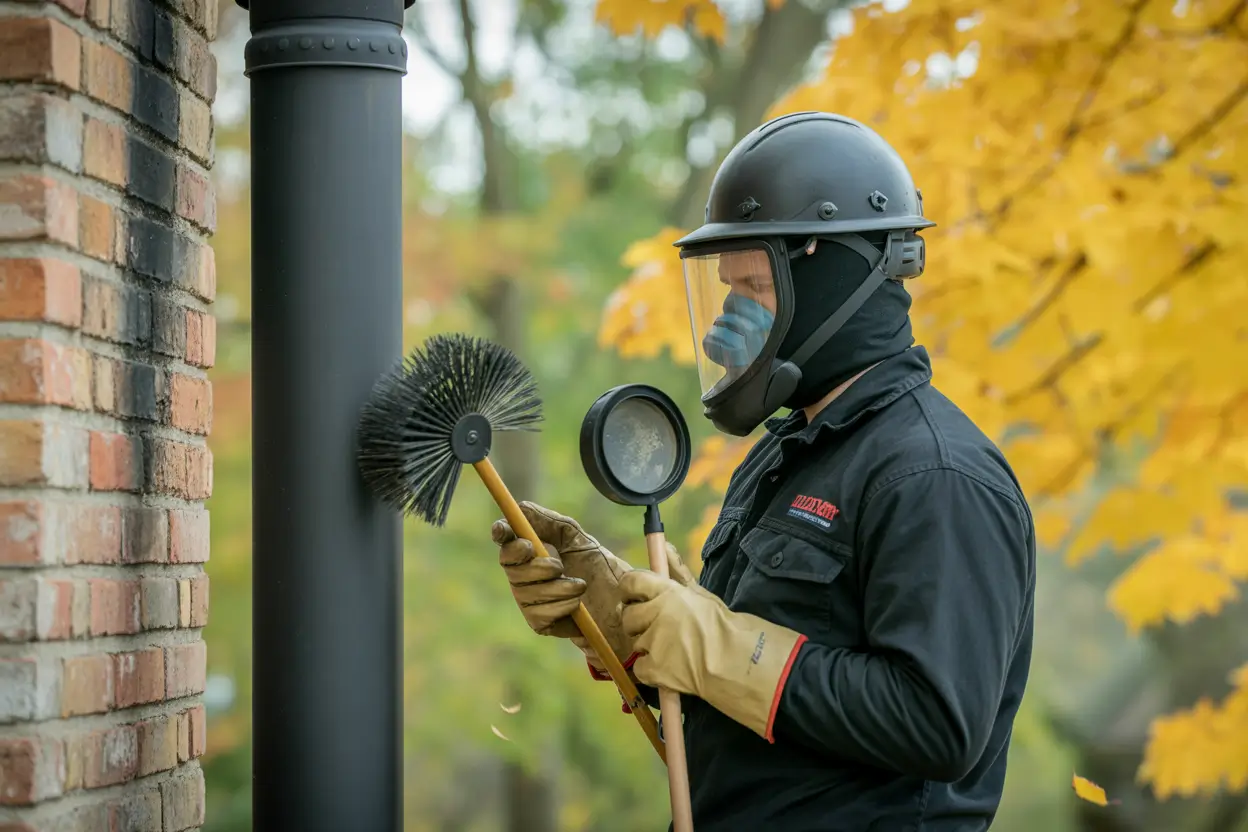
After cleaning your wood stove pipe, it’s important to inspect and maintain your system to keep it running safely and efficiently throughout the season.
Checking for Damage or Wear in the Stove Pipe and Flue
Examine the entire length of your stove pipe for any signs of cracks, rust, or holes. Damaged pipes can leak smoke into your home or reduce stove efficiency. If you spot any issues, consider repairing or replacing the pipe sections promptly. The EPA’s guide on wood stove maintenance provides useful tips on pipe condition checks.
Installing or Inspecting Chimney Caps and Liners
A chimney cap prevents rain, debris, and animals from entering the chimney, which can cause blockages or damage. Inspect your chimney cap for rust or damage and replace it if needed. Additionally, check the chimney liner for cracks or deterioration, as a compromised liner can be a serious safety risk.
Testing Smoke and Carbon Monoxide Detectors
Cleaning your stove pipe reduces the risk of dangerous gases, but it’s still crucial to have functioning smoke detectors and carbon monoxide detectors installed in your home. Test them regularly and replace batteries as needed to ensure your family’s safety.
Scheduling Regular Maintenance and Professional Sweeps
Even if you do regular DIY cleanings, it’s wise to have a professional chimney sweep inspect and clean your system annually. Certified professionals can spot hidden issues and thoroughly clean areas that are hard to reach. The Chimney Safety Institute of America (CSIA) is a great resource for finding certified sweeps near you.
Common Mistakes to Avoid When Cleaning Your Wood Stove Pipe
Cleaning your wood stove pipe is essential, but mistakes can reduce its effectiveness or even cause safety hazards. Here are some common errors to watch out for:
Ignoring Early Signs of Creosote Buildup
Many homeowners overlook early warning signs like smoky odors, slow-burning fires, or black soot around the stove pipe. Ignoring these signs can allow dangerous creosote buildup to accumulate. Stay vigilant and clean your stove pipe regularly to prevent risks.
Using Incorrect Tools or Chemicals
Using brushes that don’t fit your pipe size or harsh chemicals not designed for stove pipes can damage your system. Always choose appropriate chimney sweep brushes and safe creosote removers. Refer to trusted sources like the Chimney Safety Institute of America (CSIA) for recommended products.
Skipping Safety Precautions During Cleaning
Failing to wear gloves, masks, or eye protection exposes you to harmful soot and creosote dust. Always use proper safety gear to protect your lungs, skin, and eyes when cleaning.
Neglecting Annual Professional Chimney Inspections
DIY cleaning is helpful but shouldn’t replace yearly professional inspections. Certified chimney sweeps can detect hidden issues like cracks, blockages, or structural damage you might miss. Schedule annual inspections to keep your system safe and efficient.
Regular cleaning and maintenance of your wood stove pipe are essential steps to ensure your home stays warm, safe, and energy-efficient throughout the heating season. By preventing creosote buildup, improving stove performance, and avoiding health hazards, you protect both your family and your property. Using the right tools, following proper cleaning steps, and scheduling annual professional inspections will help you clean your wood stove pipe like a pro. Don’t wait until problems arise — make stove pipe cleaning a routine part of your home care to enjoy a cozy and worry-free winter.

